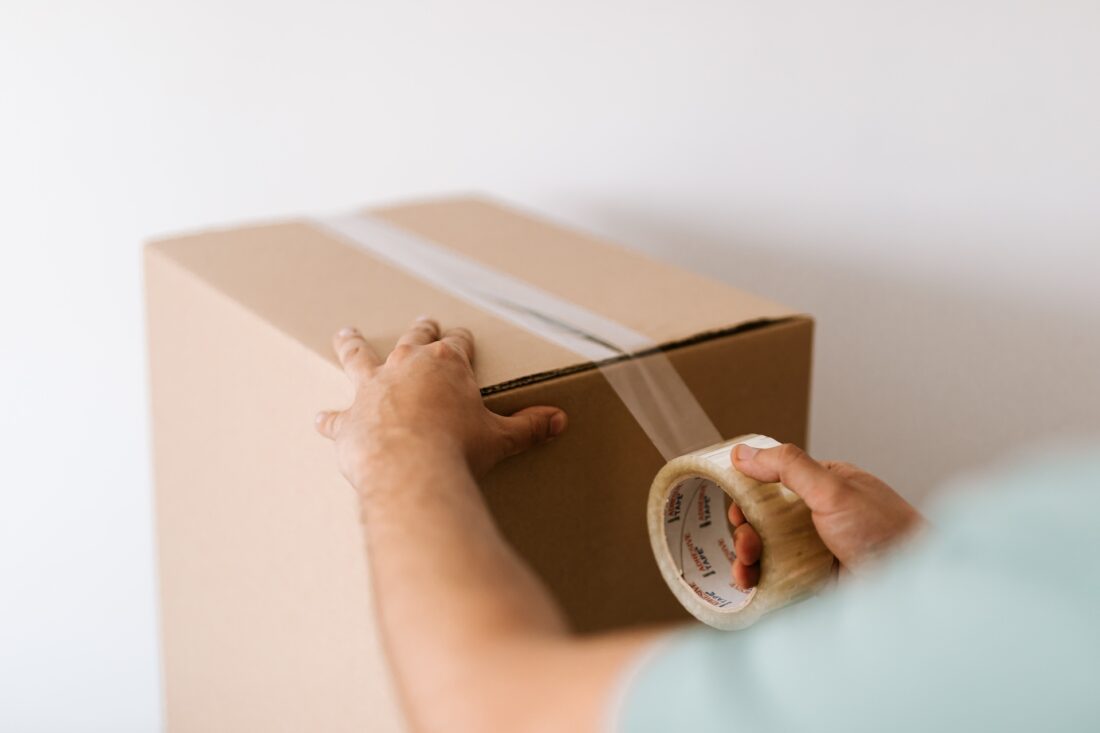Are you gearing up for an exciting cross-country relocation but feeling anxious about safeguarding your precious artworks, especially paintings? Fear not! Mastering the art of “how to pack paintings” is essential to ensure your cherished masterpieces arrive at your new destination unscathed. Whether you’re an art enthusiast or a seasoned collector, read on to learn the artful techniques that will safeguard your valuables for a smooth and worry-free relocation.


How to pack paintings for moving? Wrap each artwork in protective materials like bubble wrap and glassine paper. Utilize corner protectors and ample padding to prevent damage during transit, and don’t forget to label the package as “fragile” for cautious handling.
Before Figuring Out How to Pack Paintings, Asses the Artwork
Relocating to a new state demands a lot of hard work and careful planning, especially when it comes to packing for a move. In order to pack efficiently, you need to implement different strategies for different items, depending on their size and other characteristics.
So, before figuring out how to pack art for moving, it is crucial to assess the artwork thoroughly. Begin by evaluating the size, medium, and fragility of the paintings. For valuable or delicate pieces, consider whether professional packaging services are necessary to ensure their utmost protection during travel.
Additionally, carefully assess if the artwork can be safely transported using appropriate packaging materials to safeguard it from any potential damage throughout the journey.
Take Inventory and Document the Condition of Each Painting
One of the ways to make your relocation easier is to make a detailed inventory of all your belongings. In fact, if you hire movers for long-distance moving services, they might help you make the inventory.
So taking inventory and meticulously documenting the condition of each painting is an essential step in ensuring their safety and preservation throughout the journey. Start by creating a comprehensive list of all the artworks, noting down crucial details such as the title, dimensions, and any specific handling instructions.
Next, carefully photograph each painting from various angles, capturing their current condition in detail. These photographs will serve as valuable documentation, providing a visual record of the artworks before the move. With this organized inventory and visual reference at hand, you can confidently proceed with packing and transporting your cherished paintings, knowing that their condition has been diligently recorded for a smooth and secure relocation.
Gather the Necessary Packing Materials
Now that you are done with inventory, it is time to learn how to pack framed art for moving.
The first step is to gather all the necessary materials for packaging. This includes a selection of sturdy and appropriately sized cardboard boxes that can accommodate each artwork comfortably. Bubble wrap, paper, and glassine paper are essential for providing a protective layer against potential scratches or damage.
Additionally, secure duct tape will ensure that the wrapping stays in place during transit. And for those who wonder how to pack framed pictures for moving, having corner protectors on hand to safeguard the vulnerable edges of the paintings works like a charm. Having all these different materials readily available will streamline the process and ensure that your valuable artwork receives the utmost care and protection during relocation.
Secure Packing Materials for Additional Padding
Consider securing extra protection materials to provide added padding for artwork. Soft materials like foam or cushioning can be used to create a supplementary layer between the paintings and the boxes. This additional padding serves as a buffer, minimizing the risk of any impact or movement during transportation. And if you wonder how to pack framed art and provide extra protection, investing in custom crating services provided by your long-distance moving company can be a great solution as well.
However, if your cross-country movers don’t offer these services, hiring them for packing services will do the trick as well since long-distance movers are professionals trained to package all kinds of delicate and fragile items.
Auto Transport
Move your car across the country in an open or enclosed trailer – for an affordable fee. We offer car transport as a standalone service, but you can bundle it with your household move and get a hefty discount.
Learn moreStorage Services
Our spacious climate-controlled units will protect your things until the drop-off. No need to worry about them because all items are labeled and secure, and each customer gets a dedicated unit mixup isn’t possible.
Learn moreMoving Services
Treat yourself with a white glove long distance moving service that’s based on the inventory list and not weight. This means a price guarantee, transparent move costs and premium moving service.
Learn morePrepare the Paintings
Before you start boxing up artwork from your home, the good thing would be to properly prepare the pieces to ensure their safe transport. Begin by removing any frames or hanging hardware from the artwork, as these can cause damage during transit. Lay the paintings on a clean and flat surface, making sure to handle them with care to avoid any accidental harm. This step will allow you to have a clear view of the artwork’s surface and ensure that it is ready for the next stages of packaging.
Keep in mind that these tips for the secure transportation of artwork would have been done by professional art dealers and collectors to secure maximum protection of the art piece. However, if your paintings are not of great value, you can transport them while in frames.


Clean and Dust the Artwork
Once the paintings are laid out and free from frames or hanging materials, take the time to clean and dust their surfaces. Using a soft, lint-free cloth, gently wipe away any accumulated dust or dirt. Be cautious not to apply excessive pressure, especially on delicate paintings, to prevent unintended damage. Cleaning the artworks ensures that no debris will become trapped during packaging, maintaining the paintings’ pristine condition throughout the journey. Here is what you will need for materials to properly clean your artwork for shipping:
- Soft, lint-free cloth – To gently wipe away dust and dirt from the artwork’s surface without causing any damage.
- Isopropyl alcohol (70% or higher) – For cleaning tougher stains or spots on the artwork’s surface. Use it sparingly and test it on a small, inconspicuous area first to ensure it doesn’t harm the artwork.
- A soft brush or camel hairbrush – To gently brush away any loose dirt or particles from the artwork’s surface, especially for textured or delicate artworks.
- Compressed air – To blow away dust from hard-to-reach areas or intricate details of the artwork.
- Mild dish soap or art-specific cleaning solution – For cleaning more stubborn stains or marks on the artwork. Dilute the soap or solution with water and apply it gently with a soft cloth.
- Clean water – To rinse off any soap residue or cleaning solution after cleaning the artwork.
- Cotton swabs – For precise cleaning of small or intricate areas of the artwork.
Protect the Artwork Surface
After cleaning, it’s essential to protect the artwork surface before packing. Consider using glassine paper or acid-free tissue to create a barrier between the painting and any other materials. This layer serves as a safeguard, preventing direct contact with bubble wrap or other wrapping materials that might react with the artwork’s surface over time.
For added protection, consider placing a sheet of foam board or cardboard between multiple artworks if they need to be stacked together. By taking these precautions and protecting the artwork surface, you can ensure that your art pieces remain in impeccable condition during the cross-country relocation.


Carefully Pack the Paintings
Packing your artwork with utmost care is vital to ensure they arrive at their destination in pristine condition. So even if this is your first relocation or you are relocating at the last minute, take time to carefully wrap up each painting you got. Start by creating a sandwich-style package, then add additional padding around the edges and corners to further safeguard against potential shocks or jolts during the journey.
Creating a Sandwich-Style Package
To create a sandwich-style package, position the painting on a clean and flat surface. Place a rigid foam board or a piece of cardboard slightly larger than the artwork beneath it. Then, carefully position another foam board or cardboard on top of the painting, ensuring that the artwork is centered and well-protected. This method creates a sturdy and stable foundation, safeguarding the artwork from potential bending or warping during handling and transit.
Adding Additional Padding and Securing the Painting
Once the sandwich-style package is created, proceed to add extra padding for enhanced protection. Surround the edges of the sandwiched artwork with bubble wrap, foam, or packing paper, ensuring that the padding is snug but not too tight. This extra layer of cushioning helps absorb shocks and prevents the painting from shifting within the package. After securing the padding, use duct tape to seal the sandwich-style package firmly. Double-check that all sides are well-covered, leaving no exposed areas.


Sealing and Labeling the Package
Once the painting is securely packed, it’s time to seal and label the package appropriately. Use high-quality duct tape to seal all edges of the cardboard or foam board sandwich. Reinforce the corners and seams to ensure the package stays intact during transit. Next, carefully label the package as “Fragile – Handle with Care” in clear, bold letters.
Additionally, indicate the correct orientation of the package (i.e., “This Side Up”) to prevent any mishandling. By providing clear labeling, you can alert movers you hired to exercise caution when transporting your precious artwork, reducing the risk of accidents and ensuring a safer relocation. Here is a step by step instructions on how to pack artwork for shipping.
Hire Professional and Experienced Long-Distance Movers to Handle Your Artwork
Long-distance moving to another state is not an easy task, and probably the most dreadful part of each interstate move is the fact you have to box up your entire household. However, relocation stress can be greatly reduced if you enlist the help of professional cross-country moving services.
Not only can professionals help you with the logistic of this kind of move, but you can hire them for additional services like packing if you have valuable items you don’t want to risk damaging.
These experts possess the knowledge and skill to handle delicate artworks with the utmost care, ensuring they are packed and transported securely. By entrusting artwork to these professionals, you can have peace of mind knowing that your cherished possessions are in safe hands.
Experienced cross-country movers understand the specific requirements for packaging and protecting artwork, utilizing specialized materials and techniques. From properly wrapping each painting to securing them in sturdy, custom crates, these movers will go the extra mile to safeguard your prized possessions throughout the journey.
Cross Country Movers Can Do All the Heavy Lifting
Hiring movers not only ensures the safe transportation of your artwork but also alleviates much of the physical and mental burden that comes with cross-country moving. Professionals are equipped to handle heavy lifting, from packing and loading to unloading. This means you won’t have to strain your back or worry about any damage while trying to carry large and cumbersome items.
By delegating the packing and handling of your art pieces and other belongings to experienced movers, you can focus on other aspects of the relocation, such as house hunting and settling into your new home or taking care of important paperwork. The expertise and efficiency of professional movers can make a world of difference, turning a potentially stressful process into a smoother and more enjoyable experience.
When you choose the company to relocate you, choose the one that offers all the services you might need. For example, Long Distance USA Movers offers everything from storage and car shipping to handling your belongings and artwork.


Follow Our Guide and Your Valuables Will Be Safely Delivered to Your New Home
Ensuring the safe transportation of your valuable art pieces during a relocation is achievable with careful planning and expert guidance. Take the time to assess each painting’s size, medium, and fragility to determine the appropriate packaging approach.
To make the relocation stress-free and efficient, consider enlisting the assistance of Long Distance USA Movers. With our expertise in handling cross-country moves, including valuable artwork, you can trust our experienced team to pack and transport your artwork with the utmost care and attention.
Contact Long Distance USA Movers today and embark on a smooth relocation journey, knowing that your precious paintings will be safely delivered to your new home, allowing you to start the next chapter of your life with peace of mind.
FAQ
Should I Pack the Paintings Myself or Hire Professionals?
The decision to handle the art pieces yourself or hire professionals depends on the value, size, and fragility of the artwork. While packaging yourself may save costs, hiring experienced professionals ensures expert handling and appropriate materials to safeguard your valuable art pieces.
Can I Pack Multiple Paintings in the Same Box?
It is generally not recommended to put multiple art pieces in the same box, especially if they are large or have delicate frames. Each painting should be individually wrapped and securely placed in a separate box to prevent potential damage from shifting or rubbing against one another during transit.
How Do I Protect the Paintings From Moisture and Humidity During Transport?
To protect art pieces from moisture and humidity, wrap each artwork in glassine paper or acid-free tissue before packing. Additionally, consider using desiccant packets or silica gel packs inside the packaging to absorb excess moisture and maintain the ideal humidity levels during the move.
Are There Any Regulations or Restrictions for Shipping Artwork?
Yes, there may be regulations and restrictions for shipping artwork, especially if it involves international or interstate transport. It’s essential to research and comply with any specific guidelines set by shipping companies or authorities to ensure a smooth and legal transportation process.
What Should I Do if the Paintings Are Too Large for Standard Boxes?
If the artwork is too large for standard boxes, consider investing in custom-built crates or adjustable art boxes. These specialized containers provide a secure fit and adequate protection for oversized or irregularly shaped artworks.
How Can I Ensure the Paintings Are Adequately Insured During the Move?
Contact your chosen moving company and inquire about their insurance options for artwork transportation. Additionally, consider obtaining a separate fine arts insurance policy to provide comprehensive coverage for your valuable art pieces during the relocation process.
Can I Store the Paintings Temporarily Before Setting up a New Display?
Yes, you can opt for temporary storage solutions if your new home is not ready or if you need time to set up a new display. Choose a climate-controlled storage facility to maintain the ideal conditions for preserving your artwork until you are ready to unpack and showcase them.
Are There Any Additional Precautions I Should Take for Valuable or Irreplaceable Artwork?
For valuable or irreplaceable artwork, consider having a professional art appraiser assess their value and condition. Document the artworks with photographs and detailed descriptions for insurance purposes. Inform the movers about the importance of these items to ensure extra care and attention during transportation.









